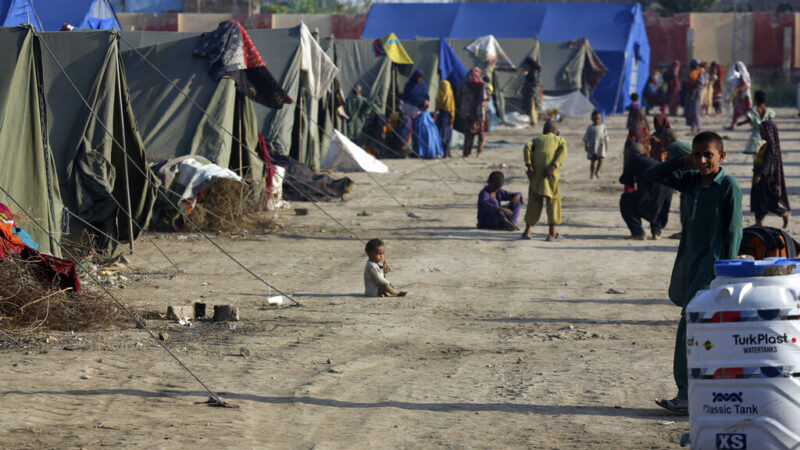About one third of Pakistan is under water, following an extreme heatwave that melted glaciers and unusually heavy monsoon rainfall. More than 6 million people are in urgent need of humanitarian assistance, according to the UN.
UN secretary general António Guterres cited estimates Pakistan needs “$30 billion and counting” to respond to the unfolding crisis.
Multiple climate hazards and risks to nature and humans will increase even if we manage to limit global warming to 1.5C by the end of the century, the most ambitious goal of the Paris Agreement. The more the world warms, the worse it will get: Massive investments are needed to reduce emissions – limiting warming as much as possible – and to adapt to climate change.
It is unsurprising, then, that Egypt is set to make climate finance the focus of the UN climate change conference Cop27, which the North African country will host in two months’ time.
Industrialized countries pledged to mobilize $100 billion a year by 2020 to support developing countries in their climate efforts. They fell short of that target, mobilizing only $83.3 billion in 2020. That’s according to donors’ own data compiled by the Organisation for Economic Cooperation and Development (OECD).
At the same time as developing countries point at the failed pledge, negotiations on a new target for climate finance are set to get serious at Cop27. In Paris in 2015, countries committed to setting such a “new collective quantified goal” from a floor of $100 billion a year before 2025. How the new goal is negotiated is critical to rebuilding trust between developed and developing countries.
To support these negotiations we, together with experts from the global north and the global south, argue in the journal Climate Policy that it would be ineffective to simply increase the target amount of climate finance without addressing qualitative concerns.
We pinpoint five elements that negotiators should take into account in order to reach a meaningful post-2025 climate finance target.
- Shifting the trillions: Negotiators should consider the connection between the new target and Article 2.1(c) of the Paris Agreement. This aims at greening all finance flows, not just climate finance. Low-carbon investment and climate-resilient development, as foreseen in Article 2.1(c), are essential to meet the scale of the challenge.
- Adaptation-mitigation balance: The new target could secure more adaptation finance by including an aim for a certain split, for instance equal shares to mitigation and adaptation, or by setting the current share as a minimum. In 2020, adaptation finance stood at just over one-third of all climate finance. The UN Environment Programme’s latest Adaptation Gap report put the costs for adaptation in developing countries at an amount five to ten times greater than the amount of public finance that currently going to adaptation.
- Grants or loans: Public climate finance mainly takes the form of loans, with loans making up 71% and grants 26% of climate finance in 2020, according to the OECD. In many cases grants are more appropriate because vulnerable countries that are in need of climate finance, particularly for adaptation, are highly indebted and have done very little to cause climate change. Setting a sub-target for grants could be one way to address this.
- Private finance: In the context of article 2.1(c), mobilizing private climate finance through targeted public financing should become more important. However, accounting private finance and attributing it to public mobilization activities has been difficult. Negotiators need to think about the most effective way forward: improving a complex accounting system, or focusing on mobilizing investments in general, regardless of whether they count towards the post-2025 climate finance target.
- Overlap with development: Parties agreed back in 2009 that climate finance should constitute funding that is new and additional to development funding. This concept continues to be important to avoid the relabeling of development finance as climate finance. However, its relevance will fade because the baseline against which it can be measured will change. As countries implement Article 2.1(c), all development finance will need to align with low-carbon and climate-resilience standards.
Negotiations on the post-2025 climate finance target present a good opportunity to reflect on developing countries’ difficulties in accessing finance, a longstanding barrier particularly for least developed countries and small island developing states.
Against the backdrop of current events such as the floods in Pakistan, negotiations also need to examine how to address losses and damages that are made worse by climate change but can no longer be avoided.
Pieter Pauw is a researcher at Eindhoven University of Technology and an affiliate at Stockholm Environment Institute (SEI). Richard J T Klein is a senior research fellow at SEI, and Zoha Shawoo an associate scientist.
